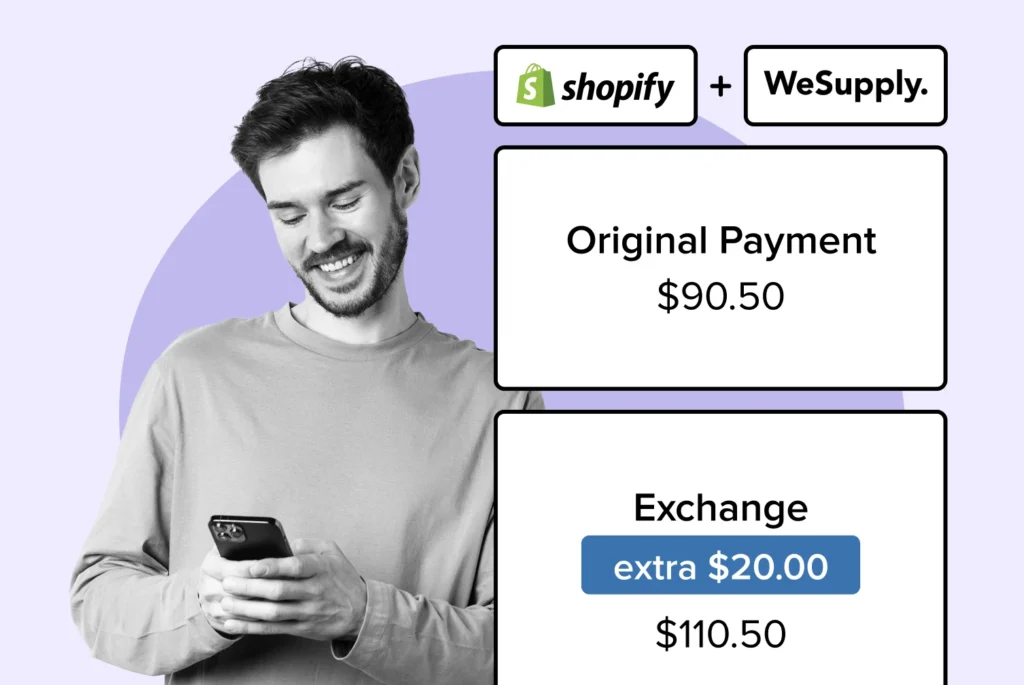
Process Product Exchanges with Shopify
This article dives into the how-to of managing exchanges within your Shopify store, offering practical tactics and key insights.
Shipping, Tracking & Notifications
Boost customer experience and reduce support tickets
Realtime order and shipment tracking
Proactive order and shipping notifications
AI-Enhanced Discounted Labels
Predictive pre-purchase estimated delivery dates
Self-Serivce branded order tracking
Effortless experience delivered
Identify and Resolve Order Issues
Realtime order and shipment tracking
Make returns profitable and delight customers
Flexibility to define any return destinations & conditions
Simplify returns for your customers and team
Incentivize exchanges over returns
Returns management made easy for your team
Returns management made easy for your team
Easy claims and smart upsells
Understand why your customers are returning
In-Store & Curbside Pickup
Unify the online and the in-store experience
Hassle-free pickup experience for customers
In-Store dashboard to keep operations streamlined
In-Store and Online orders unified
Drive foot-traffic to your stores
Shipping, Tracking & Notifications
Boost customer experience and reduce support tickets
Realtime order and shipment tracking
Proactive order and shipping notifications
AI-Enhanced Discounted Labels
Predictive pre-purchase estimated delivery dates
Self-Serivce branded order tracking
Effortless experience delivered
Identify and Resolve Order Issues
Realtime order and shipment tracking
Make returns profitable and delight customers
Flexibility to define any return destinations & conditions
Simplify returns for your customers and team
Incentivize exchanges over returns
Returns management made easy for your team
Returns management made easy for your team
Understand why your customers are returning
In-Store & Curbside Pickup
Unify the online and the in-store experience
Hassle-free pickup experience for customers
In-Store Dashboard to keep operations streamlined
In-Store and Online orders unified
Drive foot-traffic to your stores
Boost customer experience and reduce support tickets
Realtime order and shipment tracking
Proactive order and shipping notifications
AI-Enhanced Discounted Labels
Predictive pre-purchase estimated delivery dates
Self-Serivce branded order tracking
Effortless experience delivered
Make returns profitable and delight customers
Flexibility to define any return destinations & conditions
Simplify returns for your customers and team
Incentivize exchanges over returns
Returns management made easy for your team
Equip your team for precise return checks.
Easy claims and smart upsells
Understand why your customers are returning
Unify the online and the in-store experience
Hassle-free pickup experience for customers
In-Store Dashboard to keep operations streamlined
In-Store and Online orders unified
Drive foot-traffic to your stores
Find the answer to all your questions
Take a step by step trip through our functionality to see how we can improve your ecommerce processes.
Explore the most comon questions about WeSupply
Calculate the ROI that WeSupply can bring you
Read actionable articles on how to optimize your post-purchase experience and decrease support tickets
Get inspired by stories of how our customers implemented an effortless post-purchase experience
Wondering if WeSupply is a good fit for you? Read through our use cases to see how we can help you increase conversion & improve CX!
A Deep Dive into Top Companies' Order Tracking & Returns Strategy
Find the answer to all your questions
Explore the most comon questions about WeSupply
Calculate the ROI that WeSupply can bring you
Request a no strings attached review of your current shopping experience and missed conversion opportunities
Take a step by step trip through our functionality to see how we can improve your ecommerce processes.
Read actionable articles on how to optimize your post-purchase experience and decrease support tickets
Get inspired by stories of how our customers implemented an effortless post-purchase experience
A Deep Dive into Top Companies' Order Tracking & Returns Strategy
Wondering if WeSupply is a good fit for you? Read through our use cases to see how we can help you increase conversion & improve CX!

Calculating CLTV isn’t just crunching numbers—it’s strategic foresight. Customer lifetime value (CLTV) distills the essence of your customer’s worth over their journey with your business. This pivotal metric directs smarter spend in customer acquisition and retention. Keen on learning how to glean actionable insights from CLTV? Our deep dive into this key performance indicator will navigate you through its calculation and its profound implications for your marketing strategy and bottom line.
Customer Lifetime Value (CLTV) is crucial for understanding customer revenue potential, informing marketing and sales strategies, and ensuring long-term financial sustainability through factors like Average Order Value, Purchase Frequency, and Customer Lifespan.
Maximizing CLTV in e-commerce involves promoting customer loyalty and retention through initiatives like loyalty programs, effective communication, and enhancing the overall customer experience. Predictive and historic CLTV assessments both contribute to informed future business planning and resource allocation.
Business strategies to improve CLTV should include segmenting high-value customers, leveraging data to tailor marketing efforts, and continuously adapting strategies to meet changing market conditions and behaviors, emphasizing customer relationship building, retention, and experience enhancement.
WeSupply is essential for enhancing Customer Lifetime Value (CLTV) in e-commerce. It provides crucial insights into customer behaviors and preferences, aiding businesses in making data-driven decisions. Key features like efficient returns management, exchanges optimization, post purchase communication and in-depth analytics contribute to improving customer satisfaction and loyalty. This approach leads to increased customer engagement and repeat purchases, ultimately boosting CLTV.
The average customer lifetime value (CLTV) is a critical metric that quantifies the total revenue a customer generates throughout their relationship with your business. It’s calculated by multiplying the average transaction size by the number of transactions and the average customer lifespan. Sounds simple, right? But there’s much more to it than that, especially when you need to calculate customer lifetime value clv accurately.
Gaining insights into CLTV is vital because it informs decision-making processes related to marketing, sales, and overall business strategy. This understanding provides insight into:
the average customer’s lifetime value
essential for maximizing each customer relationship
offers an outlook on the business’s long-term financial sustainability.
Established businesses can derive significant value from incorporating historical customer data into CLTV calculations., as this can lead to a more accurate assessment of long-term customer value. Loyal customers can also drive up CLTV through word-of-mouth marketing—an invaluable asset in today’s social media-driven world.
CLTV plays an instrumental role in driving business success as it enables the maximization of the value of each customer relationship and offers insight into the business’s long-term financial sustainability. The customer acquisition cost (CAC) quantifies the expenses incurred by a company in converting customers, whereas the customer lifetime value (LTV) represents the revenue generated from a customer throughout their association with the company.
Understanding this balance helps businesses make informed decisions about their marketing and sales strategies, enhancing the likelihood of repeat purchases.
Grasping the key aspects of CLTV is of utmost importance. The three key factors to consider are:
Average Order Value (AOV): This refers to the mean expenditure made by a customer during each purchase and is a pivotal factor in the computation of CLTV.
Purchase Frequency (PF): This represents the average frequency of customer purchases and impacts the rate at which a customer contributes to revenue.
Customer Lifespan (ACL): This denotes the average duration a customer remains engaged in purchasing from a business and directly influences the CLTV.
Understanding these factors will help you calculate and optimize your CLTV effectively.
Multiplying the AOV, PF, and ACL yields the CLTV, which encapsulates a customer’s value over time.
Within the e-commerce sector, the significance of CLTV is further amplified. It serves as a clear indicator of:
Product-market fit
Brand loyalty
Recurring revenue from existing customers
The importance of customer retention and satisfaction.
A higher CLTV results in increased customer retention, reflecting enhanced customer loyalty and sustained revenue from existing customers. This relationship underscores the value of investing in customer retention strategies and delivering an excellent customer experience.
Nonetheless, comprehending CLTV constitutes just one part of the overall picture. Businesses also need to navigate between predictive and historic CLTV values and balance acquisition costs with customer value. Let’s dive deeper into these areas.
Predictive CLTV utilizes historical customer behavior and anticipated retention to forecast future customer lifespan and revenue, whereas historic CLTV relies on past data, assessing the value of customers based solely on past transactions. Both have their place in business planning.
For instance, predictive CLTV allows businesses to accurately plan for future demand, predict customer behavior, optimize resource allocation, and design effective business plans, while historic CLTV aids businesses in making more informed choices regarding marketing, sales, and product development.
Companies can boost their profitability with a higher CLTV by:
Identifying high-value customers
Focusing on their acquisition and retention
Increasing customer retention to enhance customer loyalty and sustain revenue from existing customers
This enables companies to justify higher customer acquisition costs, as these costs are balanced by the long-term value of the customer.
The typical customer acquisition cost in the e-commerce industry varies depending on the specific industry, generally falling within a range of $7 to $98. This highlights the importance of balancing these costs with the potential long-term value of a customer.
WeSupply is a game-changer in optimizing Customer Lifetime Value (CLTV) for e-commerce. It unlocks deep insights into post-purchase customer behaviors, guiding businesses towards data-driven decisions that enhance customer satisfaction and loyalty. By focusing on optimizing exchanges and efficiently managing feedback and returns, WeSupply maintains customer engagement and stimulates repeat business. This proactive and responsive approach significantly elevates CLTV, helping businesses thrive. Discover how WeSupply can transform your customer value equation with our ROI Calculator.
Amplifying the customer experience holds a vital role in elevating CLTV. Good customer service plays a significant role in fostering robust relationships and enhancing customer satisfaction, consequently resulting in elevated CLTV. A high level of customer service significantly increases the likelihood of:
new customer referrals
repeat purchases
positive reviews and recommendations
customer loyalty and retention
All of these factors contribute to the growth of customer lifetime value by acquiring new customers through referrals from existing customers, ultimately increasing the average customer lifetime for each existing customer.
While good customer service is a fundamental part of the customer experience, businesses can take additional steps to improve customer experience and boost CLTV. Implementing loyalty programs, optimizing customer communications, and enhancing the customer experience are all crucial strategies.
Let’s examine these strategies in more detail.
Loyalty programs can have a significant impact on CLTV by promoting recurring purchases, elevating customer expenditure over a period, and nurturing stronger relationships with customers. Effective loyalty programs in e-commerce are those that are seamlessly integrated into the customer journey and create a proactive community around the brand and offerings.
Tiered programs, where customers can progress and earn better benefits, are also popular among online shoppers.
Effective customer communication is another crucial component in boosting CLTV. Businesses can enhance customer communications by:
Adopting omnichannel delivery
Crafting clear and compelling content
Demonstrating empathy and humanity
Personalizing communications
Establishing a consistent brand voice
Promptly and efficiently addressing customer inquiries
Prioritizing omnichannel communication
Reaching out to customers on their preferred platforms
Gathering customer feedback
All these approaches contribute to building robust relationships and enhancing customer satisfaction, consequently resulting in elevated CLTV.
WeSupply stands out as an innovative Post Purchase Software, revolutionizing the way e-commerce businesses optimize customer communications. This platform transforms the post-purchase experience into a fully branded, engaging journey that keeps customers informed and connected. Key features include:
Omnichannel Tracking: Centralize orders from various channels like websites, phone, apps, marketplaces, POS, OMS, and WMS into one seamless tracking experience.
Enhanced Shipping Process: Offer timely shipping updates and detailed tracking information, ensuring a positive brand experience.
Proactive Return Notifications: High open rates for email and SMS notifications. Use these channels to send return notifications and personalized deals, reducing the need for check-up calls and enhancing customer retention.
Collect Product Images and Feedback: Facilitate easier returns and gather valuable feedback by allowing customers to upload product images and describe their issues on a branded returns page.
Discover how WeSupply can transform your post-purchase customer experience. Book a demo today and take the first step towards seamless customer communications!
Finally, focusing on the overall customer experience can lead to increased loyalty and repeat business, boosting CLTV. Essential components for improving customer experience and increasing CLTV include:
Delivering exceptional customer service
Cultivating strong customer relationships
Implementing a comprehensive customer success strategy
Providing suitable pricing and discounts
Personalizing the customer experience
Consistently engaging with customers
Offering subscription options
Prioritizing customer satisfaction
Delivering high-quality, omni-channel customer support
Utilizing data-driven personalization.
The increase in customer loyalty is attributed to the improvement in customer satisfaction, retention, and advocacy when a seamless customer experience is provided across all touchpoints.
WeSupply is dedicated to enhancing the customer experience by harnessing the power of data and analytics. It emphasizes the importance of measurable improvement, offering tools to track CSAT and NPS. The platform provides comprehensive order analytics, including detailed insights from order receipt to delivery. This enables retailers to understand every aspect of the order process, including cancellations and in-transit updates, ensuring proactive customer communication.
By focusing on data-driven decisions, WeSupply helps retailers optimize the entire journey from order placement to delivery. This approach leads to a more informed, responsive, and customer-centric post-purchase experience.
By aiding businesses in the segmentation and targeting of high-value customers, CLTV can mold marketing strategies. Some ways in which businesses can implement more focused marketing strategies tailored to high-value customers include:
Segmenting customers based on the factors influencing their purchasing decisions and their financial value to the company throughout their entire relationship
Categorizing customers by their current and potential profitability
Organizing customers into groups with shared characteristics
Increasing purchase frequencies
Segmenting based on demographic and behavioral factors
Applying value-based segmentation
These strategies can help businesses effectively target and engage their high-value customers.
However, merely segmenting customers is not enough. Businesses also need to leverage data to drive CLTV growth and utilize customer feedback to inform their strategies. By understanding different customer segments, let’s examine these aspects more closely.
Identifying and segmenting high-value customers is key to effective marketing. Here are the steps to follow:
Gain an understanding of customer attributes that indicate higher lifetime value.
Efficiently gather and analyze data to identify these high-value customers.
Appropriately target these customers with personalized marketing messages.
Convert these prospects into brand-committed customers.
Focus your marketing efforts on retaining and nurturing these profitable relationships.
By following these steps, businesses can optimize their marketing strategies and maximize their return on investment.
By leveraging data-driven insights, businesses can drive CLTV growth. Here are some ways to enhance CLTV growth:
Utilizing data to increase customer lifetime value
Promoting upsells and cross-sells to current customers
Utilizing data analytics to pinpoint areas for enhancement
These strategies can help businesses maximize their CLTV and drive growth.
Analyzing customer data to enhance CLTV can involve:
Implementing loyalty programs
Developing lookalike models
Prioritizing customer satisfaction
Focusing on customer retention strategies
Customer feedback is another vital component in improving CLTV. By examining customer feedback to enhance CLTV, organizations can:
Gather insights about customers through feedback channels and market research to enrich buyer profiles
Continuously gather feedback to identify opportunities for improvement
Utilize text and sentiment analysis to derive valuable insights
Examine behavioral patterns and purchase history to identify potential product or service issues.
WeSupply champions the use of analytics and data-driven decisions as the foundation of a successful business strategy. Recognizing that improvement is impossible without measurement, the platform emphasizes the importance of evaluating post-purchase customer experiences. Through tools designed to track CSAT and NPS, WeSupply enables businesses to fine-tune their services based on real customer feedback. This approach ensures that businesses are not only meeting but also adapting to the evolving wants and needs of their customers, ultimately creating an effortless and delightful experience for them.
Various strategies contribute to the improvement of CLTV, such as favoring exchanges over returns and leveraging data-driven insights for growth. Encouraging exchanges instead of returns can help retain customers and maintain revenue, ultimately improving CLTV. Meanwhile, leveraging data-driven insights can help businesses identify areas for growth and optimize their strategies.
Let’s further explore these strategies.
Encouraging exchanges instead of returns can help retain customers and maintain revenue, ultimately improving CLTV. Here are some strategies to consider:
Simplify the return process to enhance the convenience of exchanges.
Provide exchanges or store credit as an option instead of refunds.
Decrease return rates through enhanced customer experience.
Make exchanges more appealing to minimize revenue loss and stimulate additional purchases.
By implementing these strategies, businesses can effectively encourage exchanges over returns.
WeSupply strategically focuses on optimizing exchanges over returns, enhancing customer retention and increasing average order value. The platform encourages customers to choose instant store credit, drawing them back to the product catalog for future purchases. This approach, which includes automatically issuing store credits, gift cards, or coupon codes, enhances customer loyalty and trust. Exchanges are made effortless, allowing customers to easily select items of similar or higher value, thereby increasing the average order value and contributing to the growth of Customer Lifetime Value (CLTV).
Incentivize exchanges over returns
Book a quick call with our experts to see how WeSupply can help you save sales through exchanges and boost the average order value using instant store credit.
Analyzing and improving CLTV through data-driven insights can help businesses identify areas for growth and optimize their strategies. When examining CLTV data, it is crucial to concentrate on primary indicators including:
Customer retention rate
Average order value (AOV)
Purchase frequency
Gross margin
Churn rate
Customer activation rate
Time to first interaction
These indicators can uncover areas for operational and strategic enhancements.
WeSupply’s Returns Analytics leverages data to drive significant growth in Customer Lifetime Value (CLTV). By analyzing the reasons behind product returns, businesses gain crucial insights into customer preferences and satisfaction. The platform provides detailed data on returns by region and specific reasons for returns. This understanding of customer behavior and preferences is key to determining how returns impact CLTV. Armed with this knowledge, businesses can make informed decisions to enhance customer satisfaction and loyalty, ultimately boosting CLTV.
While boosting CLTV can present significant opportunities for businesses, it is not without its challenges. Some of the prevalent difficulties in enhancing CLTV include:
Inadequate digital strategy
Absence of customer incentives
Low customer retention
Subpar customer experience
Challenges in acquiring new customers and retaining existing clients
However, these challenges are not insurmountable.
By measuring the impact of their CLTV improvement initiatives, businesses can:
Gauge the effectiveness of their strategies
Make decisions grounded in data
Continuously monitor and adapt their CLV strategies to ensure they stay ahead of market trends
Maintain a focus on customer value
Let’s delve further into these aspects.
Measuring the impact of CLTV improvement initiatives can be difficult, but it is essential for understanding the effectiveness of strategies and making data-driven decisions. Some effective methods for assessing the impact of CLTV improvement initiatives include:
Implementing remarketing strategies
Monitoring and measuring the growth of CLTV
Driving customer retention efforts
Improving customer acquisition
Measuring marketing effectiveness and return on investment (ROI)
Tracking business profitability in one metric
By utilizing these methods, you can effectively measure the impact of CLTV improvement initiatives.
WeSupply significantly boosts ROI by streamlining the post-purchase experience and optimizing customer retention strategies. Through its efficient handling of exchanges, returns, and customer feedback, it enhances customer satisfaction and loyalty, leading to repeat purchases and higher average order values. Additionally, the platform’s insightful analytics empower businesses to make data-driven decisions that further drive profitability.
Unlock your business’s potential and see the tangible impact on your ROI. Try our ROI Calculator now and witness the transformative power of WeSupply for yourself!
Continuously monitoring and adapting CLV strategies ensures that businesses stay ahead of market trends and maintain a focus on customer value. Here are some ways to do this:
Use CRM systems to consolidate customer data
Use predictive models to compute and monitor CLTV
Enhance CLTV through data analysis and customer segmentation
By implementing these strategies, businesses can effectively manage and improve their CLV.
Regular assessments and adjustments of their strategies allow them to:
Remain adaptable to shifts in the market
Adapt to changes in customer behavior
Evaluate the overall efficacy of their customer value-focused initiatives.
Building strong customer relationships through CLV insights goes beyond just numbers. By establishing robust relationships with customers, delivering value, adjusting to customer needs, and analyzing and adjusting strategies in response to changing customer behaviors and market conditions, businesses can guarantee profitability, excel in a competitive market, recognize valuable customers, enhance customer loyalty, diminish customer attrition, impact repurchase and loyalty, boost sales, generate positive word of mouth, reduce customer acquisition costs, and enhance customer retention rates.
How can businesses adjust to evolving market conditions and sustain a competitive advantage? Let’s delve deeper into this.
Understanding and leveraging CLV insights can help businesses in the following ways:
Adapt to changing market conditions
Maintain a competitive edge
Align short-term initiatives with long-term CLV objectives
Foster enduring customer loyalty
Increase revenue
Leverage on Post Purchase Software like WeSupply
By implementing these strategies, businesses can effectively utilize CLV to drive growth and success.
Furthermore, insights derived from CLV can enable businesses to:
Make well-informed decisions
Prioritize customer experiences
Implement effective growth strategies
Comprehend the complete customer journey
Enhance customer experiences
Foster loyalty
Forecast future demand and inventory.
Combat inconvenience with proactivity & self service
Book a quick call with our experts to see how WeSupply can help you make returns easy for your customers with a beautiful, self-service solution that makes their experience easier while also providing new ways to lower costs and earn back revenue.
As explored in this blog post, the process of enhancing CLTV is ongoing. The CLTV metric is a key indicator of a company’s success, and businesses need to regularly review its impact on their business strategy and customer relations.
Continuous assessment and adjustment of CLTV strategies is necessary as they offer businesses a chance to:
Enhance their CLV calculations
Strategically align with changing market demands and customer preferences
Optimize revenue
Improve customer experiences
Ultimately leading to maximizing market reach.
From understanding CLTV’s key components to implementing loyalty programs, segmenting high-value customers, and promoting exchanges over returns, each facet of a business strategy contributes to CLTV improvement. And while the journey may be complex, the rewards are well worth the effort.
Reflections on CLTV’s influence on business strategy and customer relations reveal the significant impact understanding and leveraging CLTV can have. From helping businesses enhance their strategy and improve customer relations to adjusting to evolving market conditions and maintaining a competitive edge, CLTV is a valuable tool in the business toolkit.
Considering the market and customer behavior’s dynamic nature, the importance of continually assessing and adapting CLTV strategies is undeniable. Regular evaluations ensure the accuracy and relevance of CLTV calculations and strategic alignment with changing market demands and customer preferences.
This constant attention to CLTV ensures that businesses remain competitive and customer-focused.
To summarize, CLTV is a key metric that quantifies the total revenue a customer generates throughout their relationship with a business. Understanding and optimizing CLTV can lead to increased revenue, loyalty, and overall business success. Despite the challenges, businesses can implement various strategies to boost CLTV, such as enhancing customer experience, segmenting and targeting high-value customers, and leveraging data-driven insights. While the journey of improving CLTV is continuous, the benefits of such efforts, including increased profitability, improved customer relations, and the ability to future-proof businesses against changing market conditions, are well worth the endeavor.
WeSupply is a pivotal tool in understanding and enhancing Customer Lifetime Value (CLTV) in the e-commerce sector. By offering deep insights into post-purchase customer behaviors through analytics and data-driven decision-making, WeSupply helps businesses track and improve customer satisfaction and loyalty. Its focus on optimizing exchanges over returns, coupled with efficient handling of feedback and returns analytics, plays a crucial role in maintaining customer engagement and encouraging repeat business. This strategic approach ensures that businesses are not only responsive to customer needs but also proactive in fostering long-term relationships, thereby significantly boosting CLTV.
Yes, CLV and CLTV both refer to the overall value of a customer for the duration of their relationship with a company, taking into account factors such as repeat purchases and predicted customer lifespan.
The difference between LTV and CLTV lies in their focus – LTV deals with the total value of all customers, while CLTV centers on the value of individual customers. This distinction is crucial for understanding customer worth to a business.
CLTV is important for businesses because it helps in making informed decisions about marketing, sales, and overall business strategy, leading to better resource allocation and increased profitability.
WeSupply is an e-commerce tool that enhances Customer Lifetime Value (CLTV) by providing insights into customer behaviors and improving post-purchase experiences. It helps businesses track customer satisfaction and optimize retention strategies.
By improving the post-purchase experience and customer satisfaction, WeSupply increases the likelihood of repeat purchases, a key factor in boosting CLTV.
WeSupply’s in-depth analytics offer a breakdown of order processes, return reasons, and exchange data. This information allows businesses to make informed decisions to enhance customer experiences and CLTV.

Learn How To Create Successful Post Purchase Email Campaigns
Build an effective post-purchase email flow that helps you increase customer satisfaction and drive revenue growth!

This article dives into the how-to of managing exchanges within your Shopify store, offering practical tactics and key insights.

Learn how upgraded exchange processes can reduce costs, conserve resources, and transform customer returns into new purchasing opportunities.
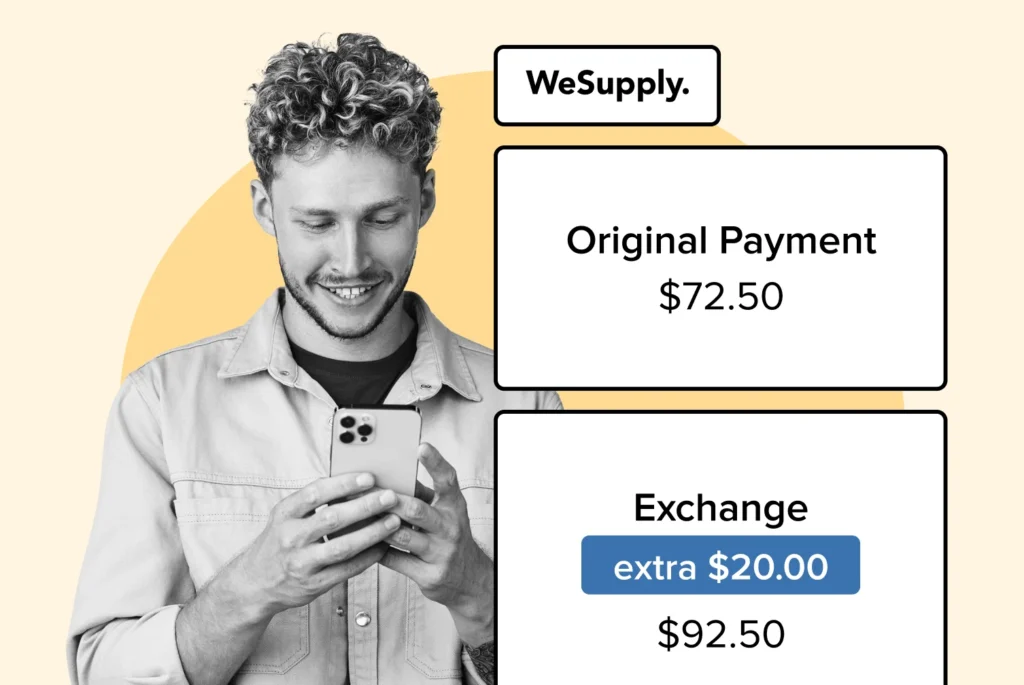
This article lays out proven strategies to optimize your e-commerce exchange policy, reduce return rates, and enhance customer satisfaction.
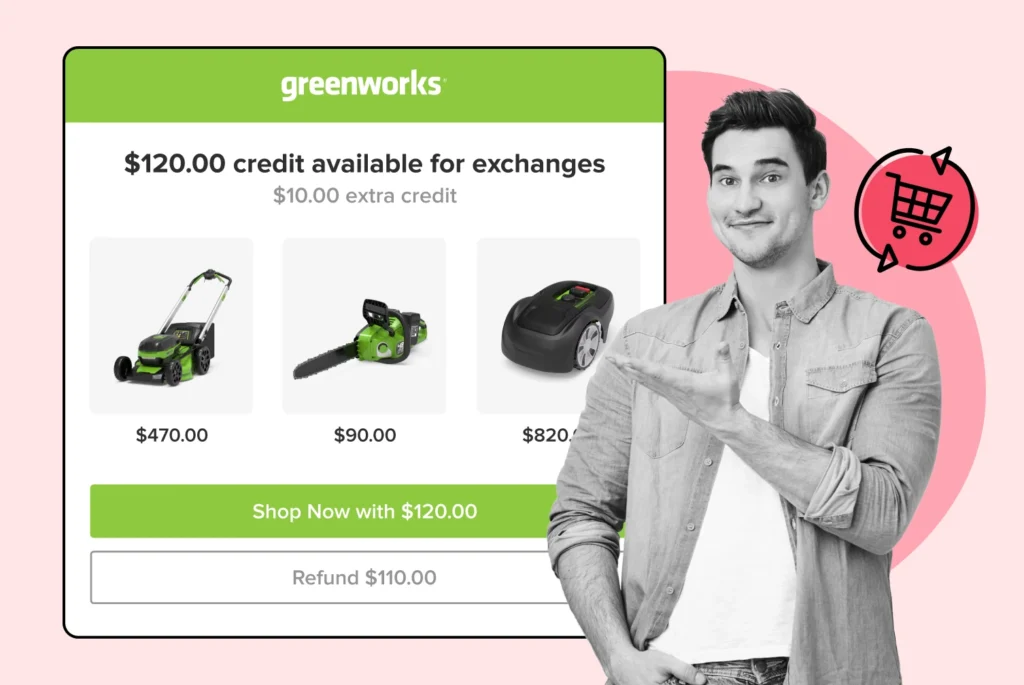
Let’s explore the mechanics, benefits, and integration strategies of instant exchange systems that can take your business to the next level.
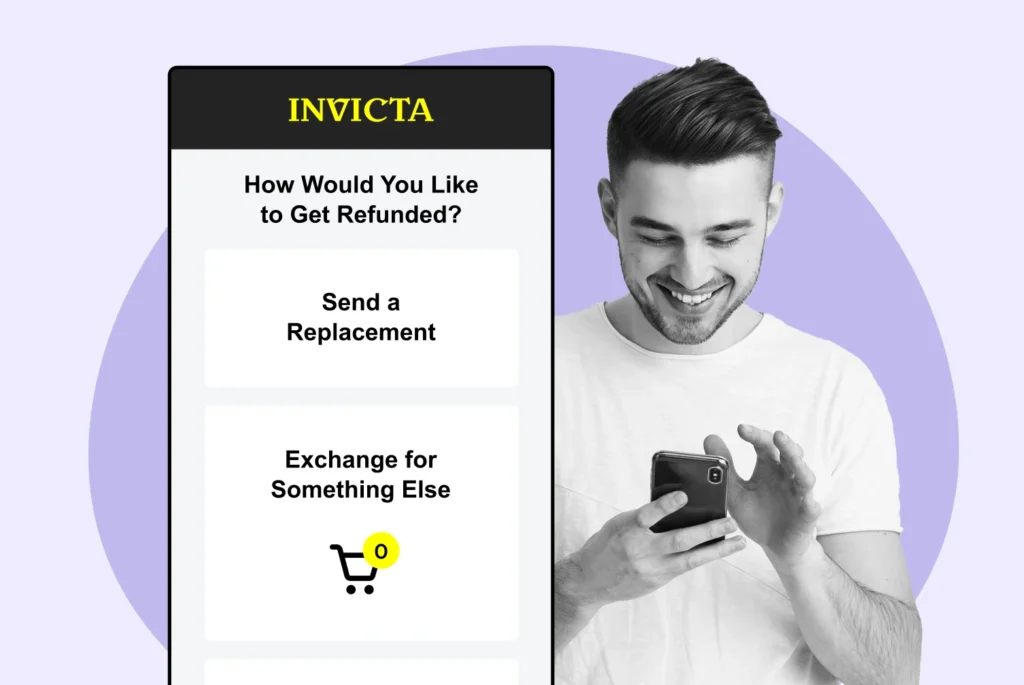
Offer tailored shopping experiences to unlock the power of personalization and propel your e-commerce business to new heights.

Let’s explore e-commerce returns: factors influencing customer satisfaction, return process streamlining strategies, and future trends.
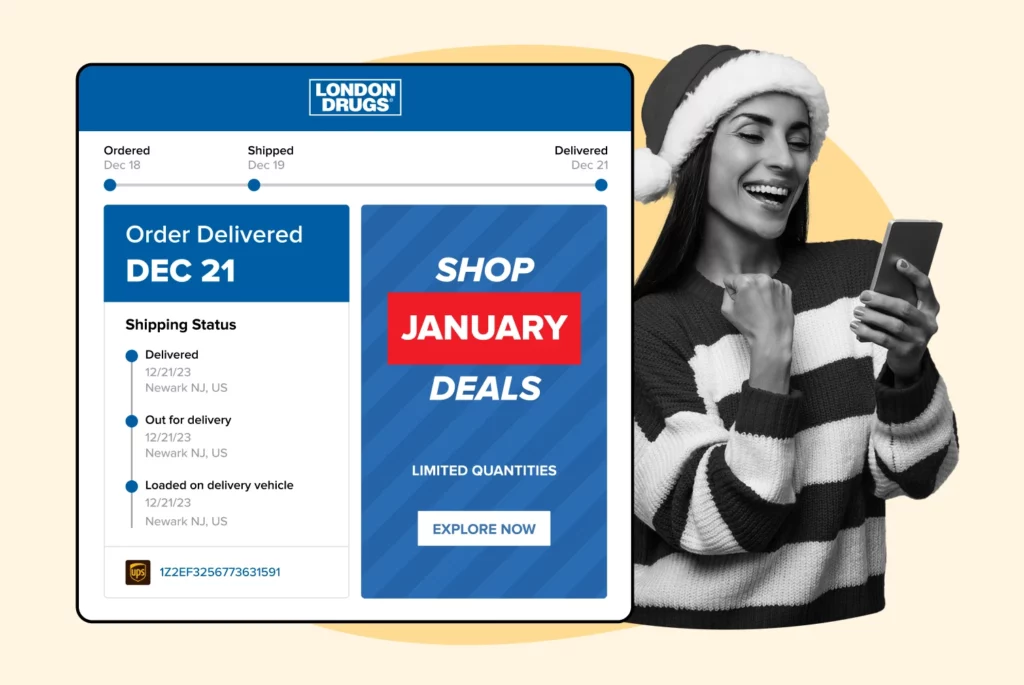
Build a consistent, year-round relationship with your clients, ensuring they stay engaged with your brand no matter the season!

Explore the various strategies that can help your eCommerce business achieve remarkable customer satisfaction.
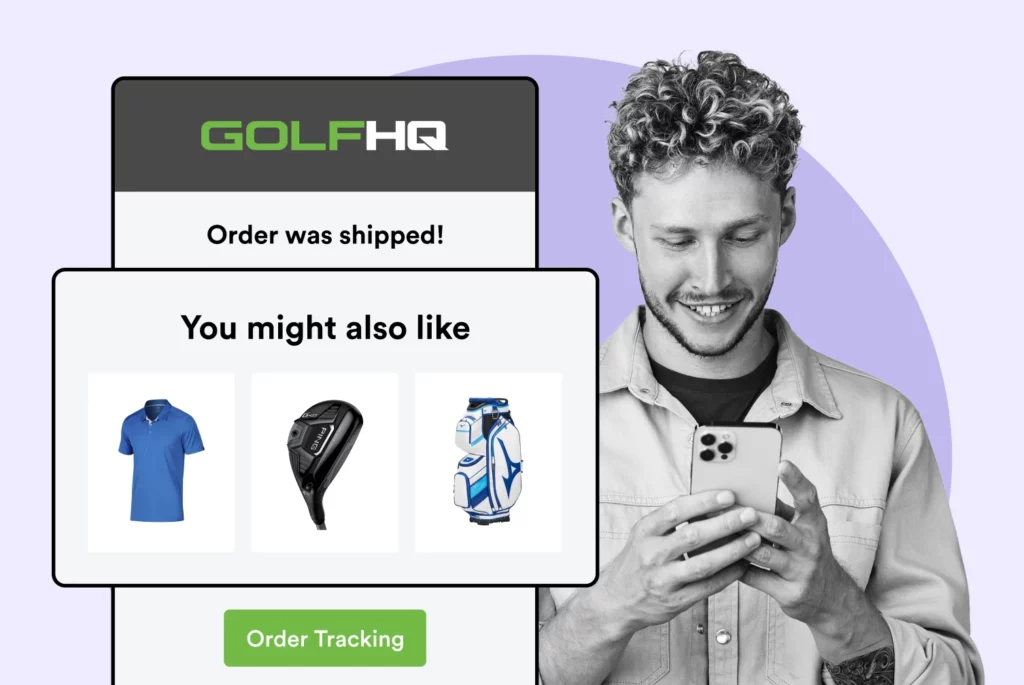
Offer tailored shopping experiences to unlock the power of personalization and propel your e-commerce business to new heights.